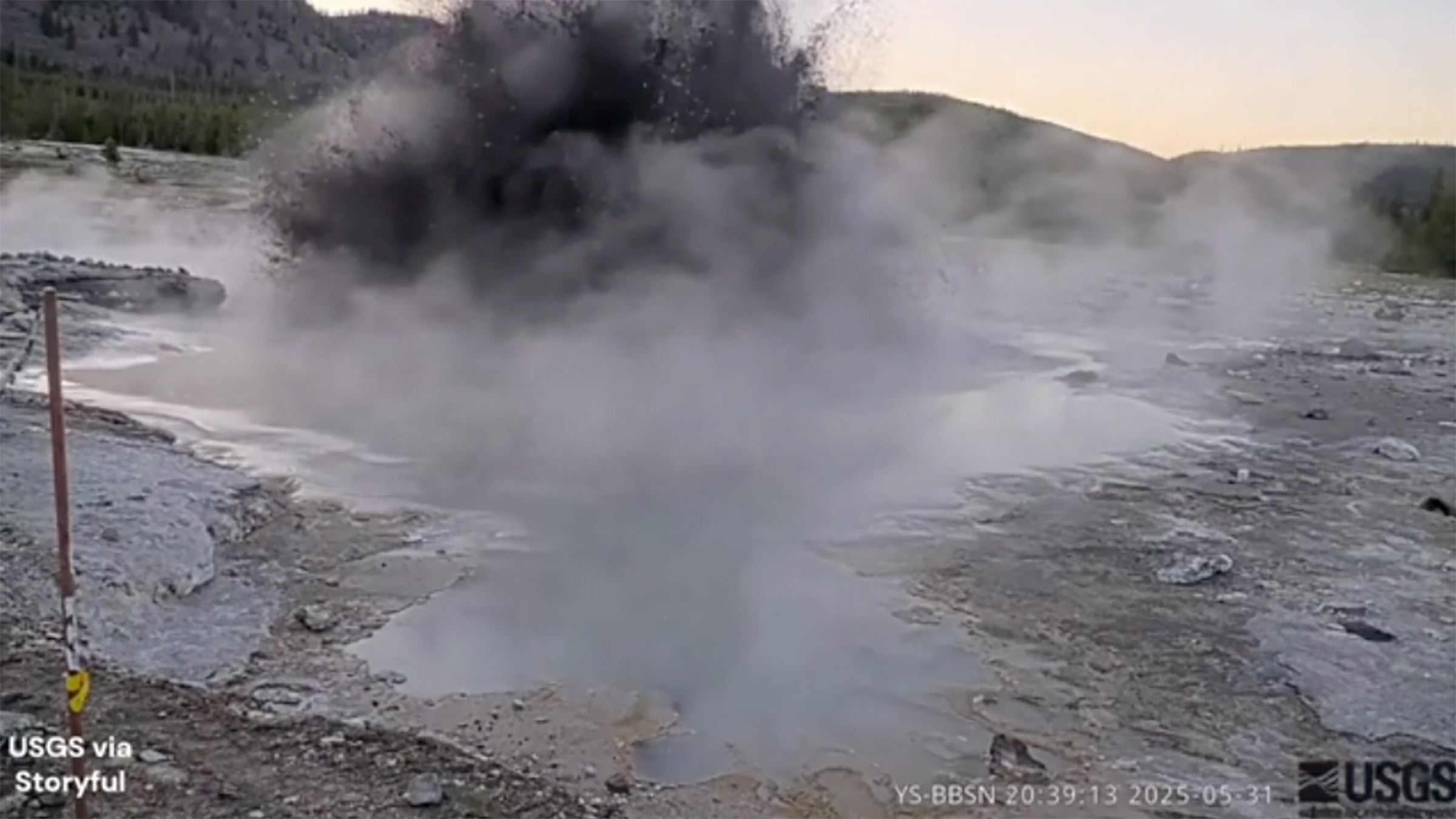On May 31, 2025, a webcam in Yellowstone National Park detected a small explosion in the Biscuit Basin Area—the same zone that suffered an unexpectedly destructive hydrothermal eruption less than a year ago.
On July 23, 2024, steam exploded from the ground beneath Black Diamond Pool in the area, destroying a park boardwalk and launching water, mud, rocks, and other debris up to 600 feet into the air. Some of the stones were up to three feet in diameter and weighed hundreds of pounds, and the event was visible for miles in all directions. No one was injured, but the surrounding area has remained closed to tourists since the incident.
The webcam that captured the most recent eruption was —along with seismometers, acoustic sensors, electromagnetic instruments, and other cameras—to monitor hydrothermal activity in the area.
YELLOWSTONE ERUPTION: The U.S. Geological Survey is reporting a small eruption occurred at the Black Diamond Pool in the Biscuit Basin, which was the site of a hydrothermal explosion last summer. Video Credit: United States Geological Survey
FULL STORY:
— NBC Montana (@NBCMontana)
Although last week’s eruption is the first caught on video since the major explosion last year , the U.S. Geological Survey (USGS) that “there is evidence from other monitoring data and some eyewitnesses that sporadic eruptions have occurred several times since the July 2024 event.” These include eruptions in January and November, both of which shot debris 20 to 30 feet into the air.
Like the 2024 eruption, last week’s smaller incident is not necessarily a sign of increased volcanic activity or hydrothermal volatility for the area, but more likely indicative of a continued resettling in the wake of the 2024 blast. “It is likely that these small eruptions are a result of the hydrothermal plumbing system for the pool adjusting after the major disruption of the larger explosion last summer,” USGS Scientist-in-Charge Michael Poland
Hydrothermal explosions occur when water underground is rapidly heated by a geothermal source, such as magma. Because the water is in a confined space, trapped under overlying rock, it’s pressurized, which means its boiling point can be much higher than the typical 100°C/212°F. That means the water can get significantly hotter before converting into steam. This is a process known as “superheating.”
Once a pressurized body of water is superheated, any sudden drop in pressure (due to a fracturing of the surrounding rock, for example), will cause the water to rapidly convert into steam, resulting in instant and dramatic pressure expansion. Steam’s volume is over 1,500 times greater than that of liquid. This leads to a violent explosion, often strong enough to shatter the surrounding rock and send debris flying up to hundreds of feet into the air.
Hydrothermal explosions aren’t uncommon in Yellowstone. They occur in the park a few times each year. However, these typically take place in the backcountry, where they aren’t often detected and don’t pose a threat to park visitors.
The Black Diamond Pool/Biscuit Basin webcam can be viewed by the public round the clock on the , but although it records footage constantly, the camera does not upload footage live. Instead, fixed images are uploaded to the website at 15 minute intervals. If an event, such as last week’s explosion, does occur, the USGS plans to post video clips online.


